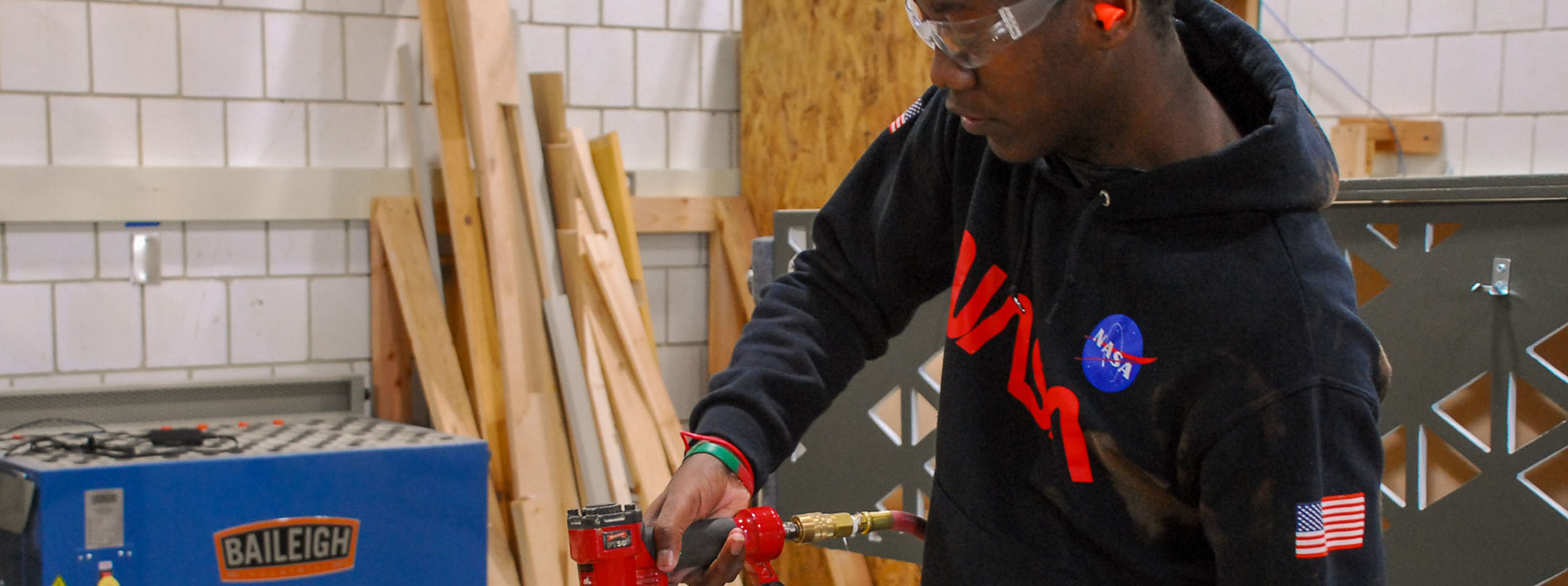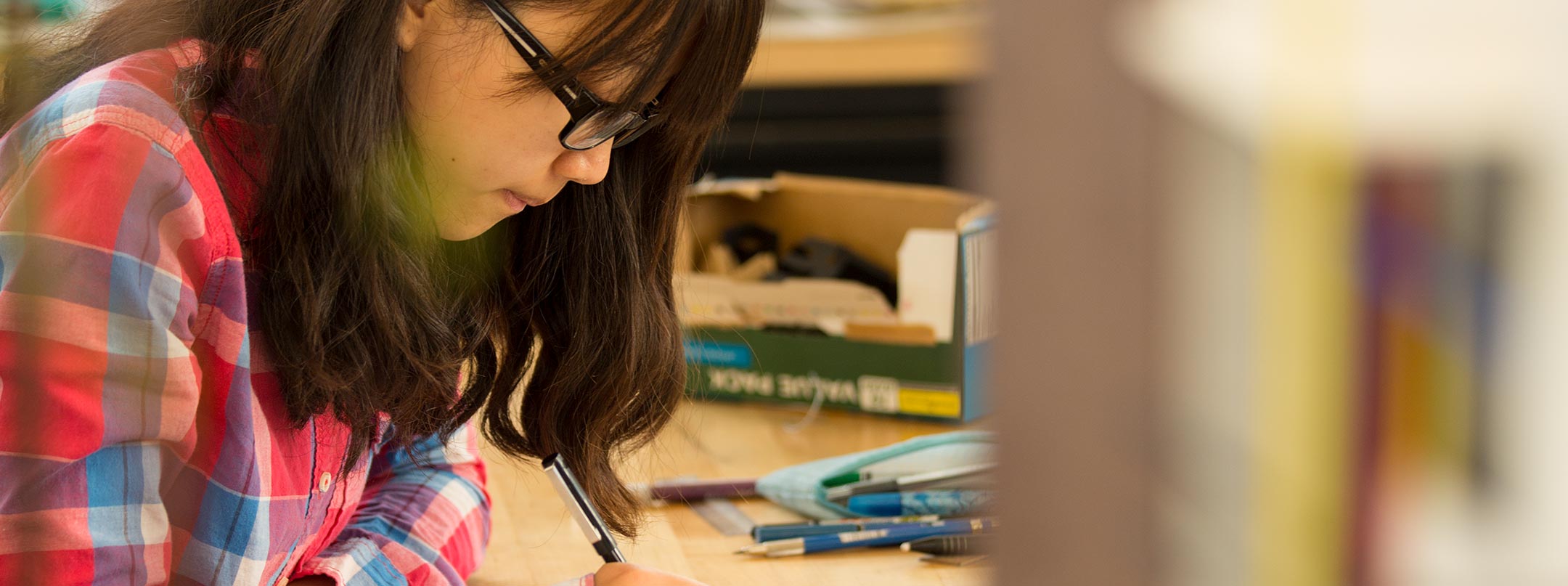College Model Shop

The Model Shop, located on the ground level of the College of Design building in room 0020, is available to all College of Design students in their second year and above to work on class projects. Access for College of Design students to the tools and equipment, including the CNC router, is funded through student technology fees.
Current hours:
| Monday | Tuesday | Wednesday | Thursday | Friday | Saturday | Sunday |
|---|---|---|---|---|---|---|
| 9 AM – 9 PM | 9 AM – 9 PM | 9 AM – 9 PM | 9 AM – 9 PM | 9 AM – 5 PM | 12 PM – 5 PM | 12 PM – 9 PM |
College of Design students who want to use the Model Shop must be in their second year or above and complete the following requirements before using equipment in the shop.
- Complete the required online Canvas College of Design Model Shop Training course offered each academic year. A form to sign up for the course is located at the bottom of this webpage.
- After online training is complete, students must complete the one-time Model Shop Orientation session to receive in-person training on proper use of shop equipment. This is scheduled with the shop supervisor via our Bookings page. Please note you will be required provide your own safety glasses for training and during shop use.
- Additional training may be added or required if deemed necessary by the shop supervisor.
Due to its complexity, an additional consultation is required for projects that need to be cut by the Model Shop’s ShopSabre IS408 router, located in 0030 Design. Please visit our Bookings page to schedule a consultation, which allows the shop supervisor to determine the most streamlined process for your project and to accurately account for and schedule router time. The actual run time of the machine will be scheduled for a later date once the consultation is completed. Students from outside the College of Design utilizing this service are charged for cut time at $0.50/min.
- 1 table saw
- 2 band saws
- 1 scroll saws
- 2 drill presses
- 2 compound miter saws
- Combination sander
- Spindle sander
- Panel saw
- Hand routers
- Palm sanders
- Downdraft table
- A wide variety of hand tools
Due to its complexity, a consultation is required for projects that need to be cut by the Model Shop’s ShopSabre IS408 router, located in 0030 Design. Please visit our Bookings page to schedule the consultation, which allows the shop supervisor to determine the most streamlined process for your project and to accurately account for and schedule router time. The actual run time of the machine will be scheduled for a later date once the consultation is completed.
Students from outside the College of Design utilizing the CNC router are charged for cut time at $0.50/min.
File Types:
Depending on what you are looking to cut we can accept several different file types.
Modeled surfaces (Site Models, Topographies): Rhino (.3dm), Stereolithography (.stl), Solidworks (.sldprt)
Basic shapes or geometry/vector-based work: Autocad (.dxf), Illustrator (.ai)
Tips:
- It is important to know board sizes and thickness before you start designing your files, especially if you have interlocking components. Keep in mind material thickness you buy in the store is nominal and is seldom accurate. For best results, use a caliper to measure the materials.
- If working in CAD-based software, place your drawings or models on 0,0 for an origin point.
- Use separate layers to designate different cutting operations or depths.
- Take into consideration limitations of available tooling – most commonly stocked tools are 1/8”, ¼”, 3/8”, ½” bits both in end mill and ball nose. While a 1/8” bit will be able to cut smaller detail, it is limited to approx. 5/8” cut depth. Smaller tooling will also drastically increase the length of time to cut a job. You are also limited in the height of your model based on design and the cut length of chosen tooling.
Commonly used materials:
- MDF (Medium Density Fiber-board)
- PB (Particle Board)
- Plywood
- Solid wood
- Blue foam
Keep in mind some materials cut better than others. Many people choose MDF for creating Site Models or Topography since it cuts very well and leaves a smooth surface. It is also easily glued into thicker slabs with standard wood glue. Blue foam is a cheaper and lighter-weight alternate for MDF. PB is a great product for basic shapes and or structural components, especially those that will be painted or laminated later. Plywood, depending on grade, is a great material for the router. We recommend staying away from sheathing/flooring-grade ply as it is seldom flat, full of voids, and tends to splinter on the router, whereas cabinet-grade and/or Baltic birch plywood is a flat dense product that machines well and provides a good visual product.
Be realistic in time expectations of CNC router work with regard to due dates of projects.
Sign up for online training
Orientation/safety classes are held each semester and are required to use the Model Shop. Please fill out the form below. A Model Shop supervisor will add you to a Canvas course where you can begin the online training and orientation process.

A Cyclone in the Making
Find your place at Iowa State University’s College of Design, where we like to ask questions, poke and prod, create something new, and make a difference through design.
